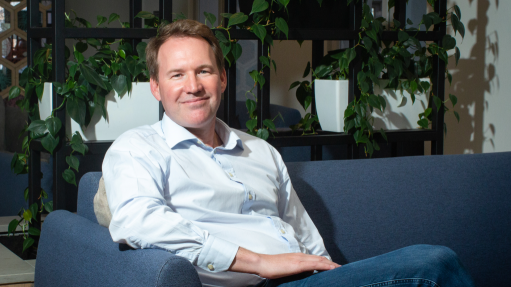
JONATHAN SINDEN The strategic use of data is crucial for driving growth and creating immersive customer experiences
The commercial and industrial property market is struggling with rising costs, macroeconomic fluctuations and the rapid advancement of technology, according to property company Liberty Two Degrees (L2D) COO Jonathan Sinden, who notes that these factors are significantly reshaping the industry and necessitating innovative approaches to stay competitive.
He explains that the increasing costs faced by commercial property companies, including rising rates, taxes, and utility costs such as water and electricity, further escalate expenses, and that combined with inconsistent service provision, are compelling commercial property managers to seek alternative solutions to mitigate the financial strain.
Commercial property managers also face several operational challenges, including revenue scaling, talent management and the evolution of omnichannel retail.
To address these challenges, L2D has implemented through one of its strategic building blocks, “Good Spaces”, which focuses on operational efficiencies and responsible business practices. This strategy includes significant investments in renewable-energy projects and water-saving initiatives.
Notable projects include the conversion of water to air-cooled heating, ventilation and air-conditioning systems, rainwater harvesting systems, and solar panel installations across the company’s portfolio. Additionally, L2D is exploring energy wheeling and black water harvesting.
Global Uncertainties
The commercial property sector is not immune to the effects of macroeconomic fluctuations and geopolitical uncertainties, Sinden notes, adding that global inflationary pressures have led to tighter monetary policies and a more cautious financial market reaction, resulting in slowed growth in the industry.
“A key focus for the industry is the ability to manage costs to achieve efficiency while maximising on the low-hanging fruit within the challenging context to stay afloat and counter the current macroeconomic impact,” he says.
Technology is another major disruptor in the commercial property industry, and Sinden highlights its increasing prevalence.
“Our responsibility as commercial property managers is to introduce technology into our spaces to support this disruption and meet the ever-changing needs of our shoppers,” he states.
At L2D, technology enhances the customer experience and benefits retailers in shopping malls, through initiatives such as a piloting a purpose-built digital gift card solution at Sandton City and smarter ticketless parking solutions, demonstrating L2D’s commitment to leveraging technology.
Additionally, Sinden highlights that L2D has integrated data across its portfolio to better understand customer behaviour and monitor services in real time.
He explains that the strategic use of data is crucial for driving growth and creating immersive customer experiences.
Through the “Good Spaces” building block; sustainability is a core focus, with L2D committed to responsible contributions in the property industry. “Upholding continuous and sustainable communities fosters a stable operating environment,” Sinden notes.
Further, consumer spending trends also significantly influence asset management strategies in the commercial property sector.
L2D therefore monitors turnover trends and compares them to industry benchmarks to optimise their tenant mix. This approach has enabled the company’s portfolio to remain ahead of market benchmarks in terms of growth in yearly trading density.
“This stems from our ability to innovate and create experiential retail as well as the partnerships that L2D maintains with tenants,” Sinden comments.
Looking ahead, Sinden believes that the relationship between property development and the retail sector will continue to evolve.
“Physical stores will remain relevant but must delight customers through experiential initiatives. Omnichannel retail and environmental sustainability will be key to enhancing the customer experience and achieving operational efficiencies,” he concludes, highlighting that a health and wellness focus is an increasing consideration for customers. ![]()